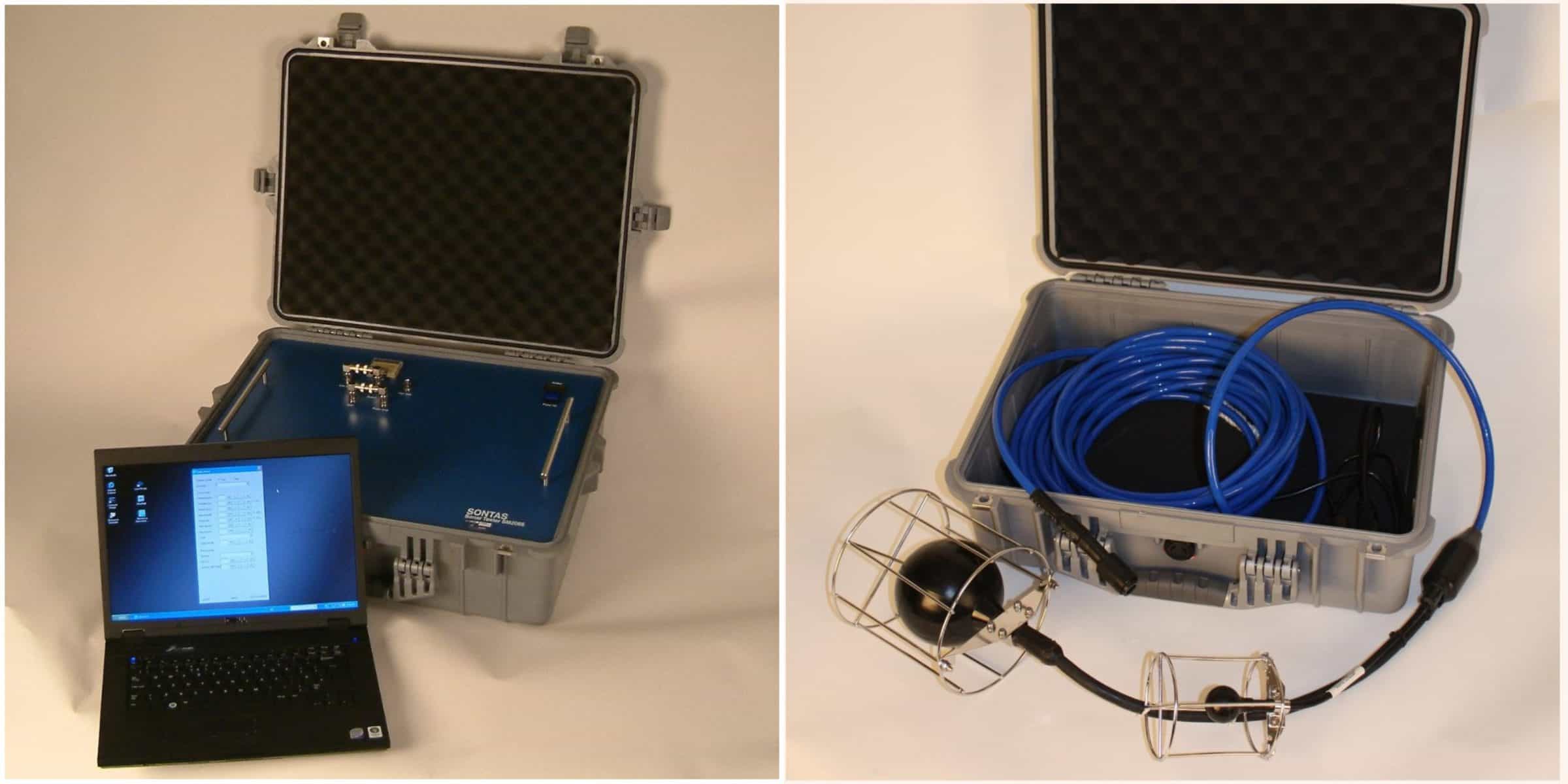The Sonar Tester At Site, SONTAS, is a complete portable and battery-powered system for calibrating and testing naval sonars. The system is easy to handle from a ship or dockside testing, and may even be handled from a small vessel, like a RIB. The system consists of the following main parts:
- SONTAS Pelicase, containing all electronics necessary to simulate underwater sonar target.
- PC-based SONTAS Control Unit that communicates with the SONTAS Pelicase using an Ethernet LAN link.
- Transducer-assembly, standard edition is comprising one transmitting transducer and one receiving hydrophone combined in one assembly, but other transducer configurations are available, for instance with more transducers for wideband frequency range.
The system can simulate signals for active and passive sonar testing, including an advanced echo repeater, as well as support for emitting acoustic sound or noise in the water.
The SONTAS Pelicase is “the heart” of the sonar tester, and it contains:
- Pre-amplifier
- Processor/DSP for the Sonar Target (Sonar3 in new deliveries)
- Power amplifier
- Transducer
The unit is battery powered with a 110-230VAC charger inside. In normal use, the battery should supply the SONTAS for 4-7 hours. All the external connectors for transducer assembly, LAN and power (for charging) are water resistant when mated.
Frequency range is dependent on the configuration of the delivered transducer-assembly. For the SONTAS standard edition the frequency range is 3 kHz to 50 kHz, however other configurations for lower or higher frequency range is available on demand.
The SONTAS-LF version supports by default frequency range 300 Hz – 5 kHz. There also exist a SONTAS-HF version targeting high frequency sonar testing when ship is dockside. SONTAS-HF has higher sample rate than the standard edition, and a transducer assembly covering high frequencies, most often 60 kHz – 500 kHz, but other configurations are available on demand.
Scanmatic may customize SONTAS for customer’s need. Typical variations may be usable frequency range and minimum output source level, among others.
